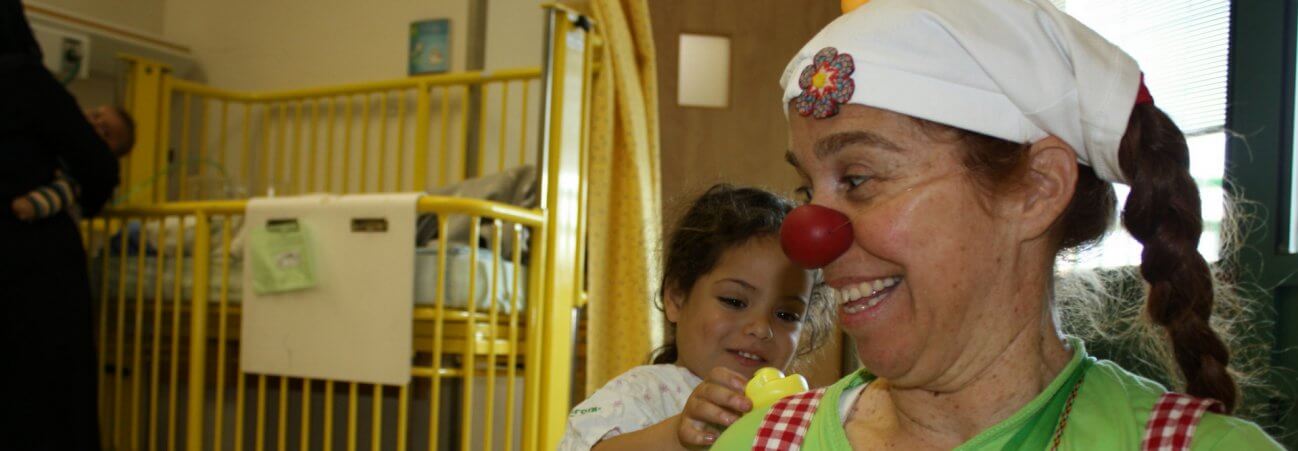Every year, over 200,000 hospital patients encounter a Dream Doctor…
Playing a unique role in healthcare
Dream Doctors are professional medical clowns who work as members of medical teams in 31 hospitals across Israel to improve patient care, ease the stress of illness, and advance therapeutic outcomes. Dream Doctors work hand-in-hand with doctors and nurses in regular weekly shifts, usually in the morning when the majority of medical procedures take place. They assist and accompany children in more than 40 different medical procedures such as blood tests, surgeries, injections and burn therapies, among others.
Dream Doctors are professional performing artists who undergo extensive training to work inside hospitals. Dream Doctors employ a wide variety of skills and techniques to help relieve tension and anxiety among patients as well as gain a sense of personal control. These include creating distractions; role playing; acting out suppressed desires, anger or frustration; imagining alternative realities, and more. Dream Doctors approach every patient with remarkable sensitivity, taking into consideration their individual needs based on their condition, situation, and treatment.
Areas of specialization
Dream Doctors specialize in areas such as autism, sexual abuse, oncology, burn treatment, trauma and PTSD, resiliency, nephrology, NICU, child development, rehabilitation, dementia, geriatrics, mental health, youth-at-risk, among others.
Populations Served
Dream Doctors provide specialized care to over 200, 000 child and adult patients a year including preemie babies, youth-at-risk, victims of sexual assault, veterans, and communities in trauma, among others. They serve all of Israel’s diverse population, regardless of race, religious, cultural or socio-economic backgrounds and play a unique role in facilitating cross-cultural liaisons mediating across religious, ethnic and national lines.
Research-Proven Methods
Dream Doctors research-proven methods demonstrate that medical clowning significantly improves the well-being of hospitalized children and patients. Benefits include lowered perception of pain, reduced need for sedation, accelerated recovery time, alleviation of anxiety and depression, greater compliance and better therapeutic outcomes.
Watch them in action


 Donate
Donate  - עיצוב ובניית אתרים
- עיצוב ובניית אתרים